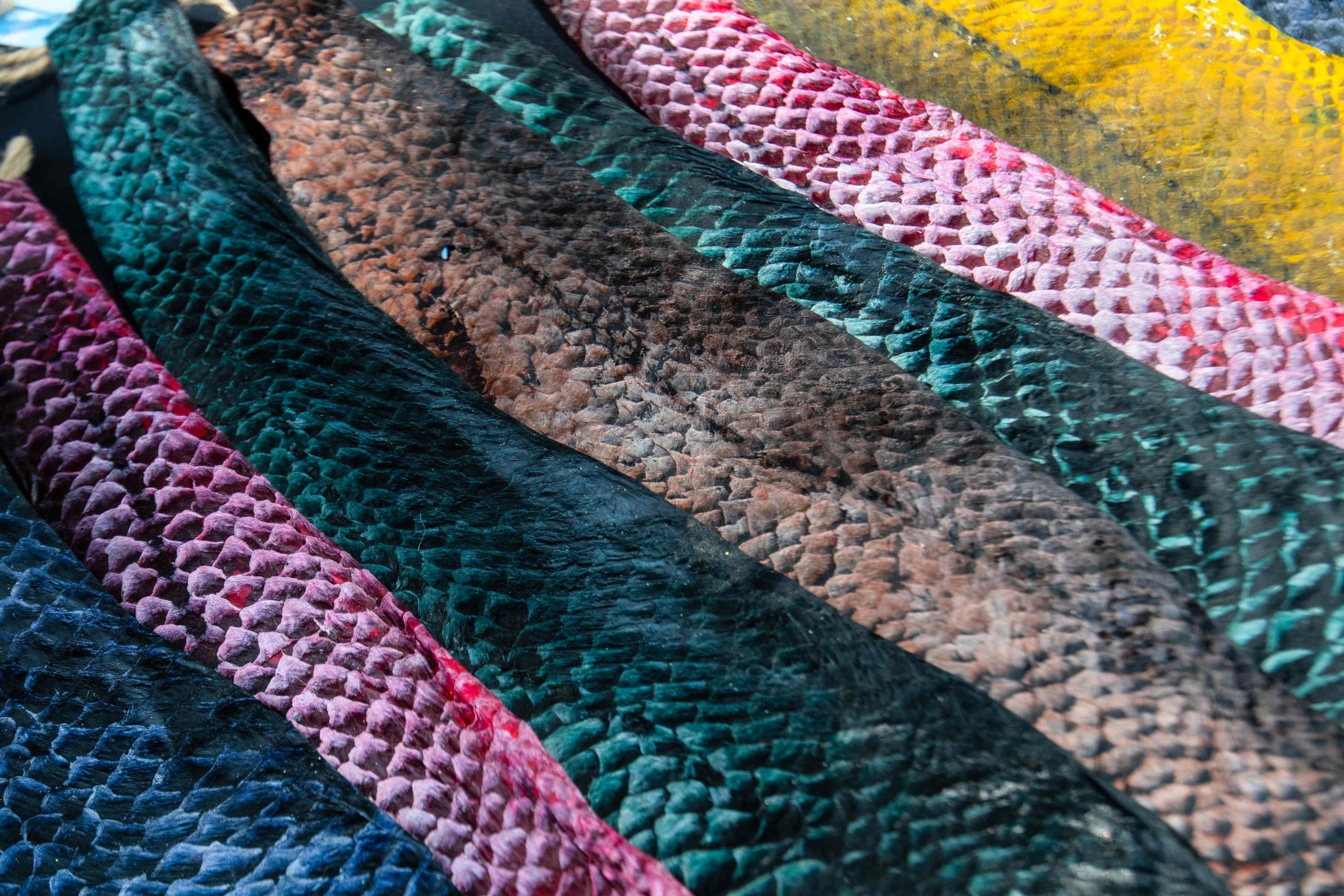Colorful fish skins that will be used for the production of earrings and key rings by the female workers of the "Piel Marina" ("Marine Skin") cooperative at Costa de Pajaros beach, Puntarenas, Costa Rica, Sept. 19, 2024. (AFP Photo)
On a beach in Costa Rica, as fishermen land the day's catch, two women are hard at work on a slimy sea bass skin, rubbing, scraping, washing and tanning the hide to turn it into leather.
Two years ago, both Mauren Castro, 41, and Marta Sosa, 70, were stay-at-home mums dependent on their fishermen husbands to provide for their families of four and six, respectively.
Today, they are part of the all-female "Piel Marina" (Marine Skin) cooperative, which turns fish skins that used to be discarded at sea into sustainable fashion.
For generations, fishing was the economic mainstay in Costa de Pajaros, a village situated about 62 miles (100 kilometers) west of the capital San Jose.
But fishermen say that regulations aimed at making stocks more sustainable, which this year included a complete ban on fishing between May and July, have made it harder to live off the sea.
Enter the nongovernmental organization (NGO) MarViva, which helped train 15 women to establish themselves as seafront tanners two years ago.
The women were skeptical at first about the sartorial possibilities of fish skins.
"We said 'how can a skin, which is something that gets smelly, which is waste, be the raw material for women to be able to get ahead?'" Castro, 41, told AFP.
But over time they honed their trade and are helping supplementing their families' meagre incomes.
Facebook, Instagram
Wearing blue rubber gloves and white t-shirts bearing the words Piel Marina, Sosa and Castro show how a skin rescued from a filleted sea bass can become a pair of earrings, a necklace or even a handbag.
First, they rub the skin gently between their fingers to remove the scales and any remaining flesh.
"Then we take it and wash it with soap, as if we were washing clothes. Then we dye it with glycerin and alcohol and natural dye, and then we dry it," Sosa explained.
The dyeing process takes four days, with another four needed for the leather to dry in the sun to produce a fabric that is soft and pliable but strong.
Crucially, it no longer smells of fish and has the advantage of being waterproof.
View of earrings and keychains made with fishskin by women from the "Piel Marina" (Marine Skin) cooperative at the Costa de Pájaros beach, Puntarenas, Costa Rica, Sept. 19, 2024. (AFP Photo)
The women are not only tanners, but have also become jewelry designers who sell colorful earrings and necklaces on Instagram and Facebook.
A pair of earrings in the shape of a butterfly costs the equivalent of about $7.
The women also sell some of the leather to small-scale textile producers in Puntarenas, the main port on Costa Rica's Pacific coast.
Indigenous tradition
Costa Rica is just the latest country to catch onto the potential of fish tanning, an age-old practice among Indigenous peoples from Alaska to Scandinavia to Asia.
While salmon skins were traditionally used by the Ainu people in Japan and the Inuit in northern Canada to make boots and clothes, and on the shores of Lake Victoria in Kenya, they now use the local tilapia delicacy to make handbags.
Brazilian company Nova Kaeru meanwhile offers leather made from the discarded scales of the giant pirarucu fish, which is native to the Amazon.
On the internet, fish leather bags sell for hundreds of dollars.
One of the first big-name fashion designers to get hooked on the skins was former Dior creative director John Galliano, who sported an Atlantic salmon skin jacket and fish leather bag in his 2002 collections.
For the moment, the women of the Piel Marina cooperative are glad to have a job that gets them away from domestic chores and provides them with a small income.
But they dream of the day when the leather they make by hand on the beach struts the global stage.
Castro's eyes shine at the prospect.
"I would like it to be seen in Hollywood, in Canada or on the great catwalks in Paris!"

